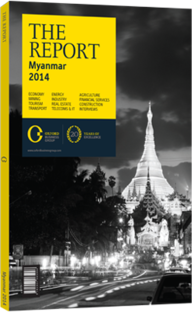High flyers: Negotiations for a critical airport tender are under way
When it was announced in August 2013 that a South Korean consortium had won the tender to build the new Hanthawaddy International Airport, Myanmar’s opening to the world gained critical momentum. The airport, which is scheduled to open in 2018, is a badly needed hunk of infrastructure. To sustain the country’s current pace of progress in international trade, investment and tourism, Myanmar must dramatically expand its airport capacity, especially for traffic in and out of Yangon, the business capital. Yangon’s current airport, located within city limits, has little room to expand. Hanthawaddy, with some 4.1m ha of land at a site near Bago, 80 km north-east of Yangon, will have plenty of space for more terminals and runways. The airport will be built to handle up to 12m passengers a year, and be expandable up to 30m. Add to this a parallel project to double the capacity of the Yangon airport, and the city’s total capacity will leap more than six-fold, from 2.7m a year currently to 17.5m by 2017.
Going Global
By attracting high-calibre foreign investors to fund and build the new airport, Myanmar has proved that its vision of Yangon as one of the major business centres in South-east Asia is more than mere guff. At a cost of about $1.1bn, the new airport is the largest non-energy investment project to be built in Myanmar to date. Since August 2013, however, when Incheon International Airport, Korea’s largest, was named as the preferred bidder to build the airport, talks have broken down, local and international media have reported. Negotiations with a consortium including Singapore’s Changi Airport Planners, Yongnam Holdings and Japan’s JGC Corp to build and operate the new airport are currently ongoing. The consortium was originally named in August 2013 as the back-up candidate to take on the project. It is unclear when Myanmar’s Department of Civil Aviation will award the concession. By striking a deal with either group, Myanmar will have a showcase project that demonstrates how it can work with top international firms. Whichever consortium wins will have priority rights to negotiate with the Department of Civil Aviation.
Breaking Ground
The pace at which the government has moved on these big projects shows their importance to the continuation of political reforms. In April 2012, when by-elections brought opposition leader Daw Aung San Suu Kyi and her party into parliament after years of persecution, few expected that billion-dollar foreign deals would rush in this soon. Until 2012, for example, China was the overwhelmingly dominant foreign investor in Myanmar, stoking suspicions that the Chinese were taking advantage of Myanmar’s isolation. Since then, the government has hurried to draw investors from other Asian countries, especially Korea and Japan.
Another groundbreaking feature of the project is that it is a 100% foreign investment in a public works project. This has only been allowed since late 2012, when a new foreign investment law was passed. The airport tender marks a decisive break from a tradition in Myanmar that required foreign investors to partner with local firms. In practice, these tended to be companies with close ties to military leaders.
So far, only the larger international tenders are being opened to 100% foreign bidders, as it is to these that the government is trying to attract the highest-calibre investors. A $440m mixed-use real estate project in Yangon, for example, is being developed by Vietnam’s Hoang Anh Gia Lai group. Tenders for deep offshore oil and gas exploration are ongoing.
After a long period of isolation, many Burmese are suspicious of foreign investment, and concerned that as multinationals move in local businesses will be left behind. In fact, the presence of a domestic ownership stake in a project has little to do with how much of it gets carried out by Myanma companies and citizens. Removing the domestic partner requirement for projects of all sizes would not only draw more foreign money, but also accelerate the growth of local business.
You have reached the limit of premium articles you can view for free.
Choose from the options below to purchase print or digital editions of our Reports. You can also purchase a website subscription giving you unlimited access to all of our Reports online for 12 months.
If you have already purchased this Report or have a website subscription, please login to continue.

